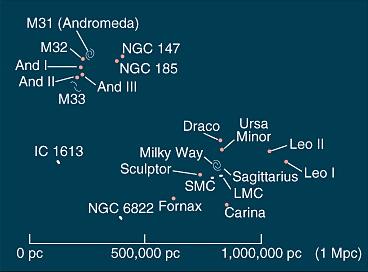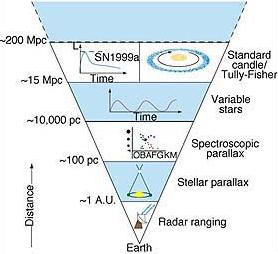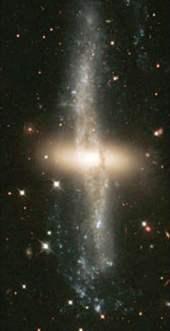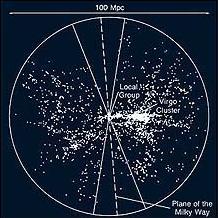
The Local Group: Includes M31, the Milky Way
galaxy, their satellites, and other small galaxies, for a total of about
30-40 [including And XII, falling into the Local Group at 556 km/s]; It
may
be evolving
into an elliptical galaxy, after the future collision between the Milky
Way and M31. |
The Milky Way
Neighborhood
- Does the Universe end outside the Milky
Way? To answer, we need to measure the distances to suspicious
objects like the Andromeda Nebula and the Magellanic Clouds;
To do that, we need to see objects of known luminosity, "standard
candles".
- Finding distances: Out to 30
Mpc or so, use variable stars, mainly Cepheids (10,000 times
the Sun's luminosity, see M100); The LMC (50 kpc
away) and SMC [with their Magellanic Stream], and some others
are in our immediate surroundings; The closest one is the Sagittarius
dwarf [which we may have ripped apart from the LMC].
- The Andromeda galaxy: M31, about
2 Mly away, is the closest large galaxy to us; It is similar
in structure and size (somewhat larger), and is also surrounded by small
galaxies and leftover clouds of gas.
|





![]()